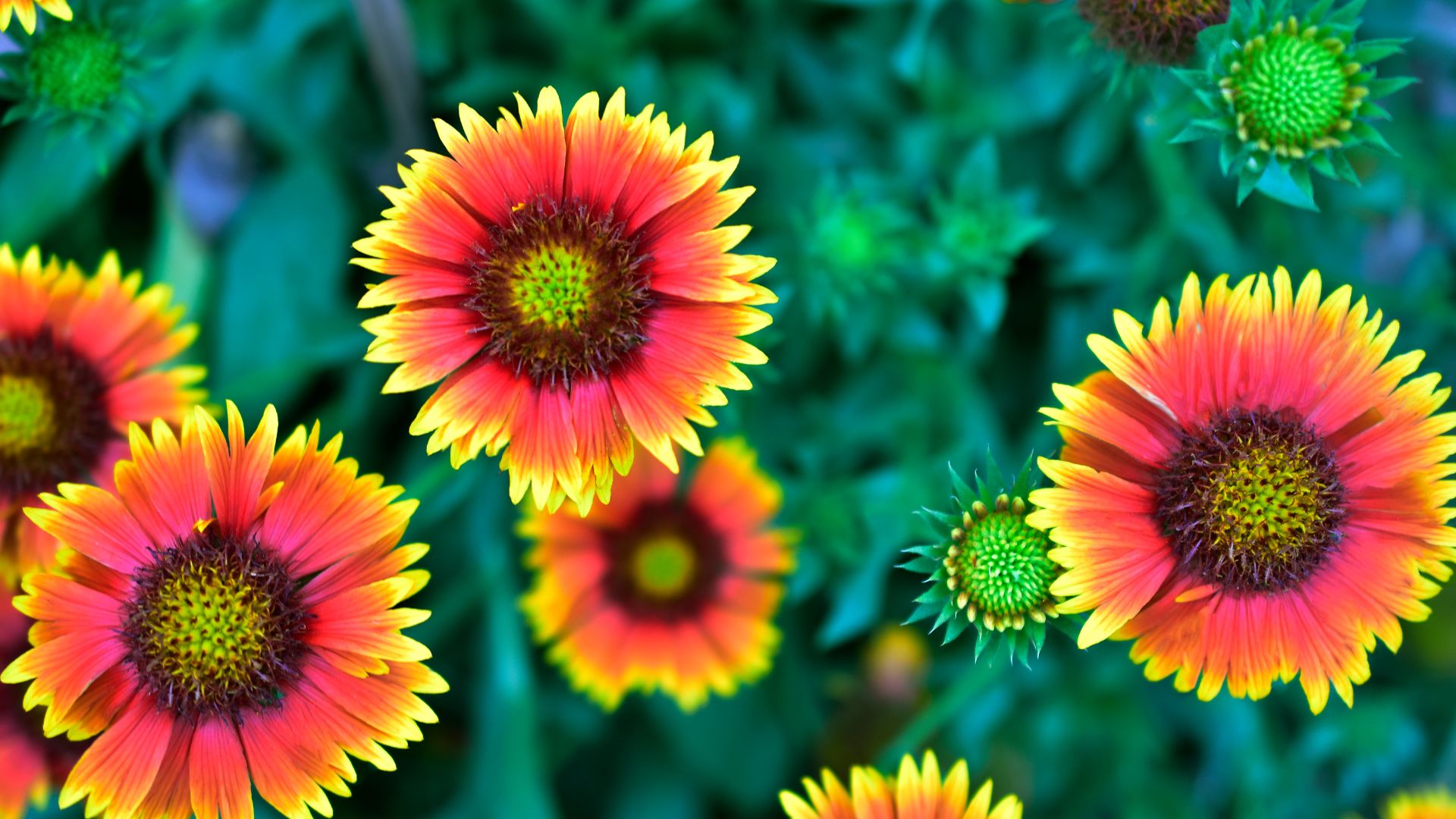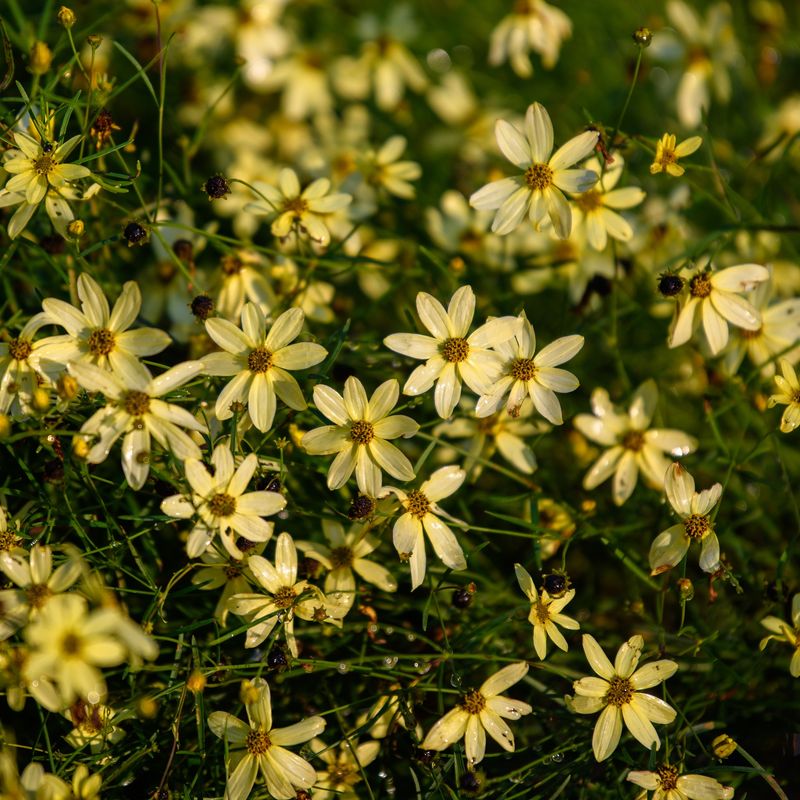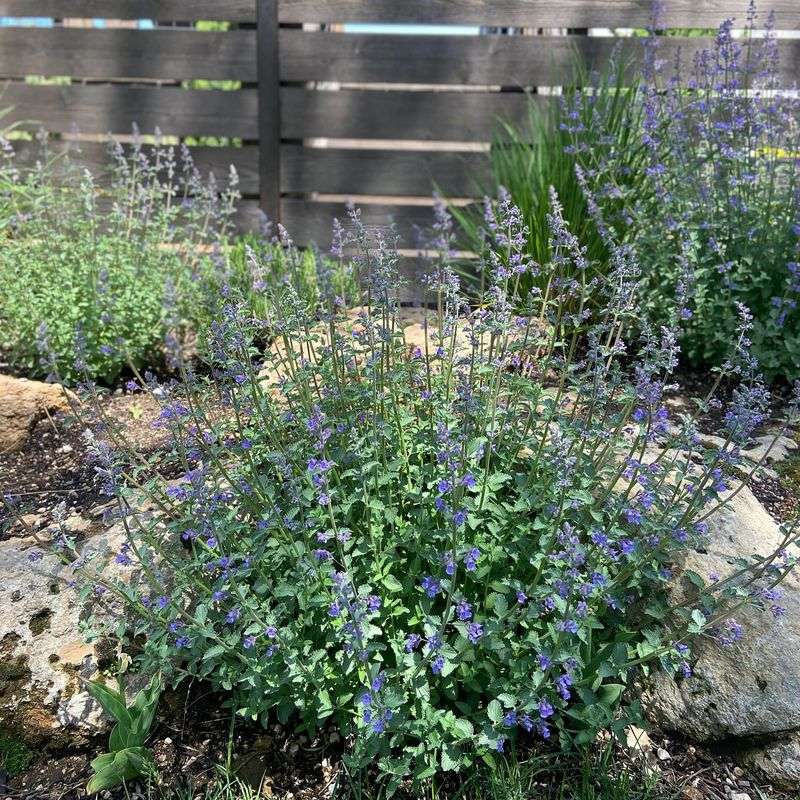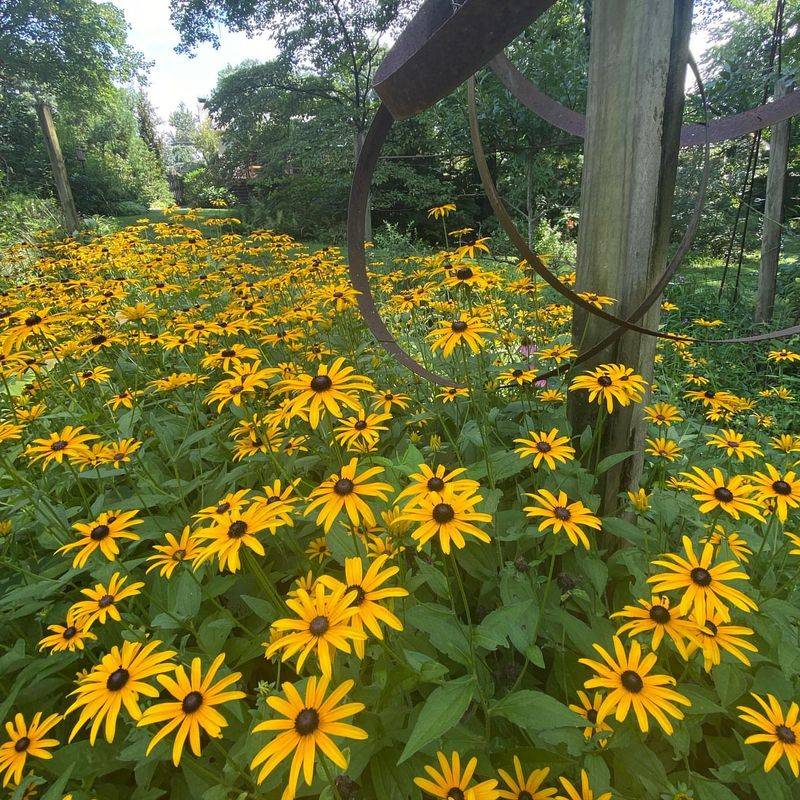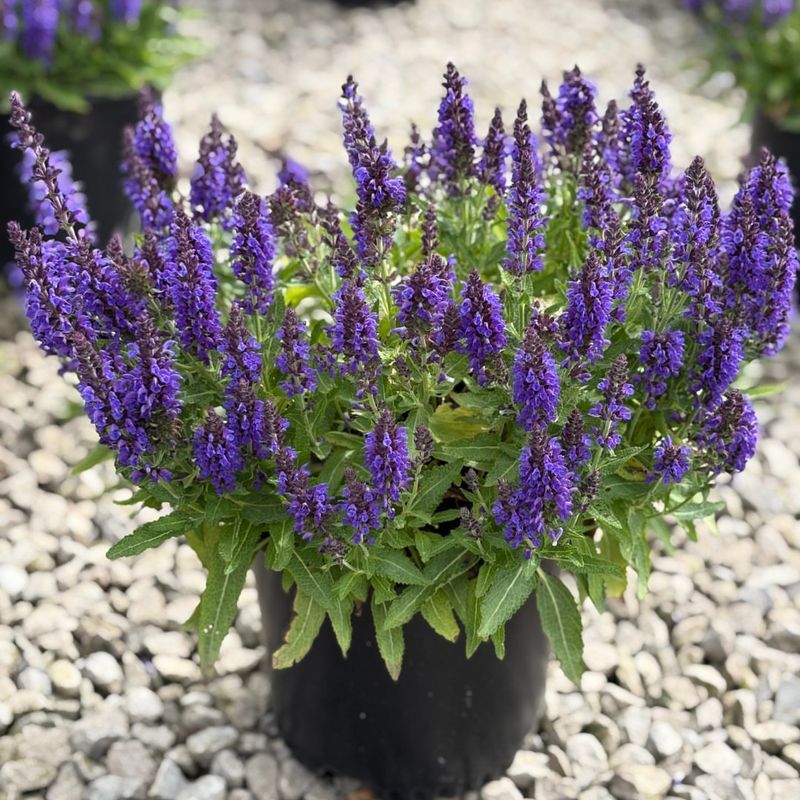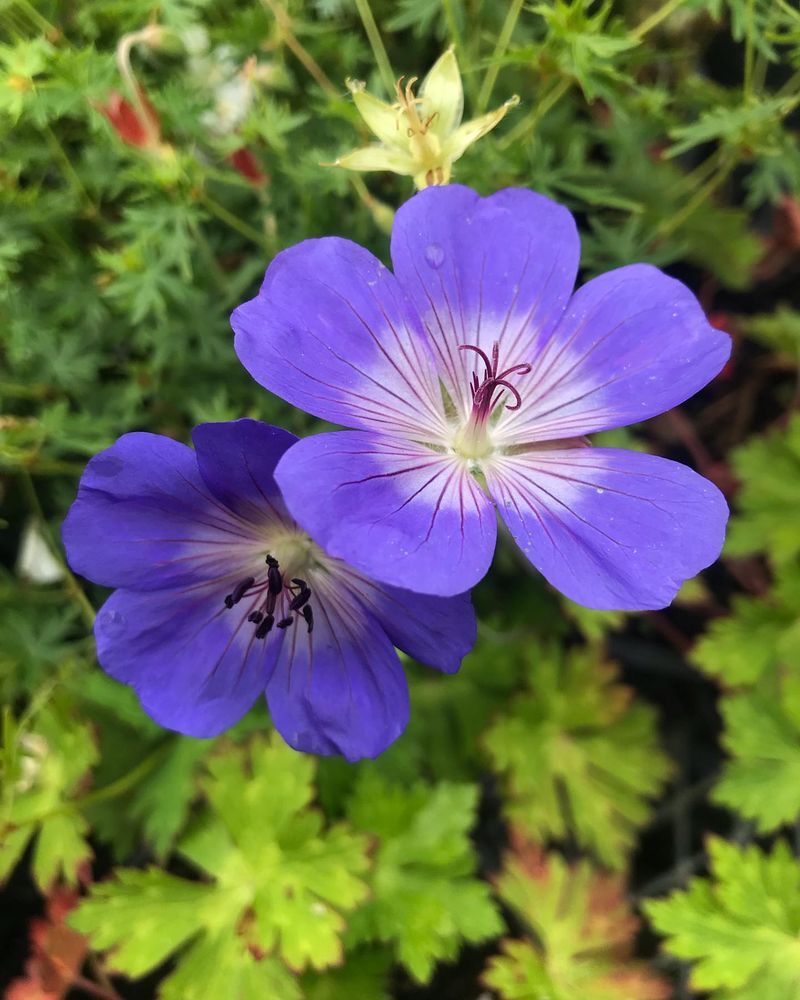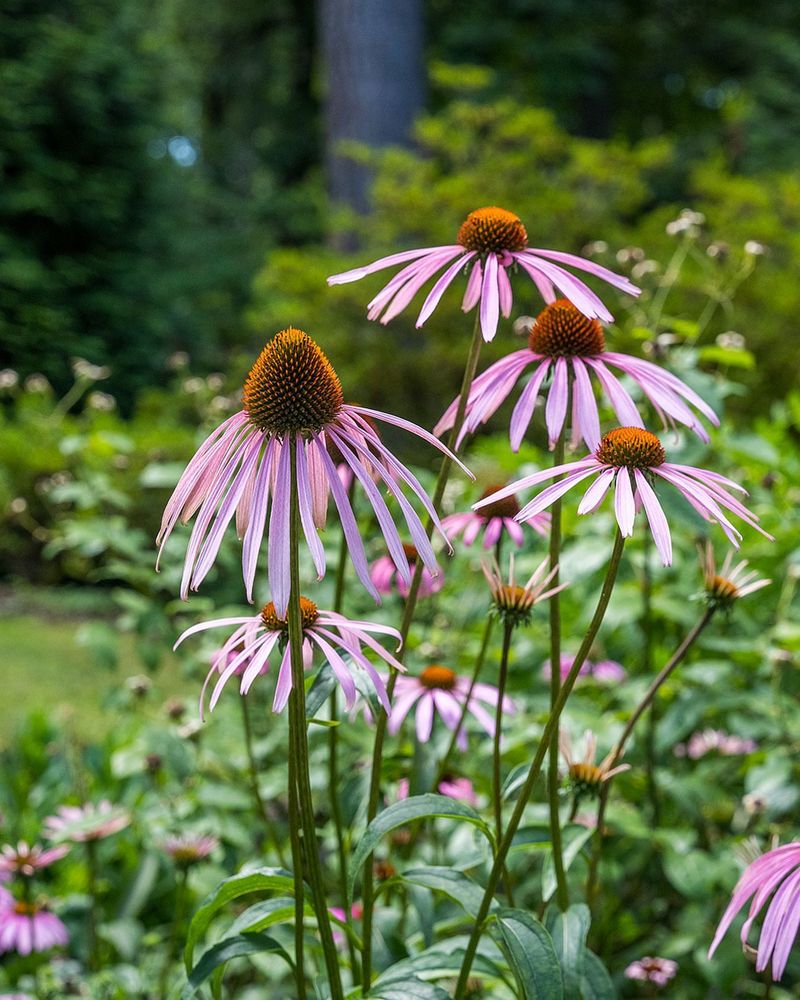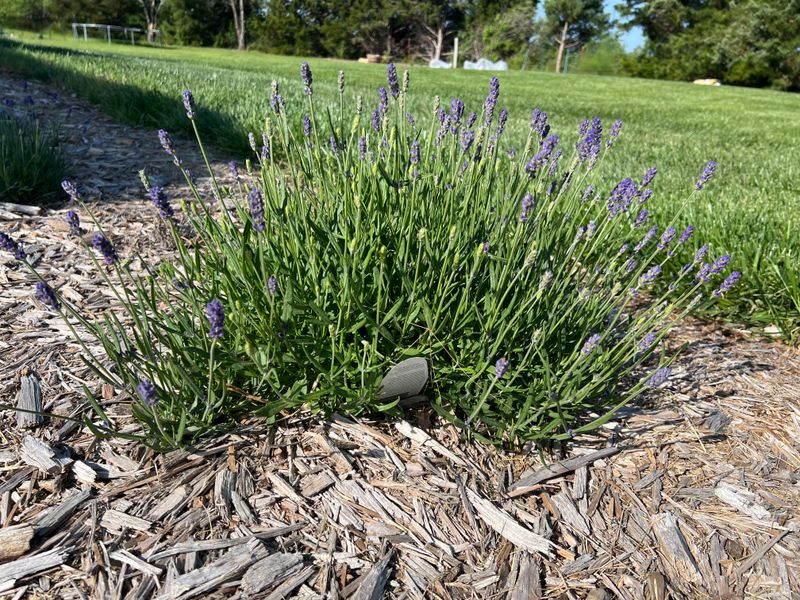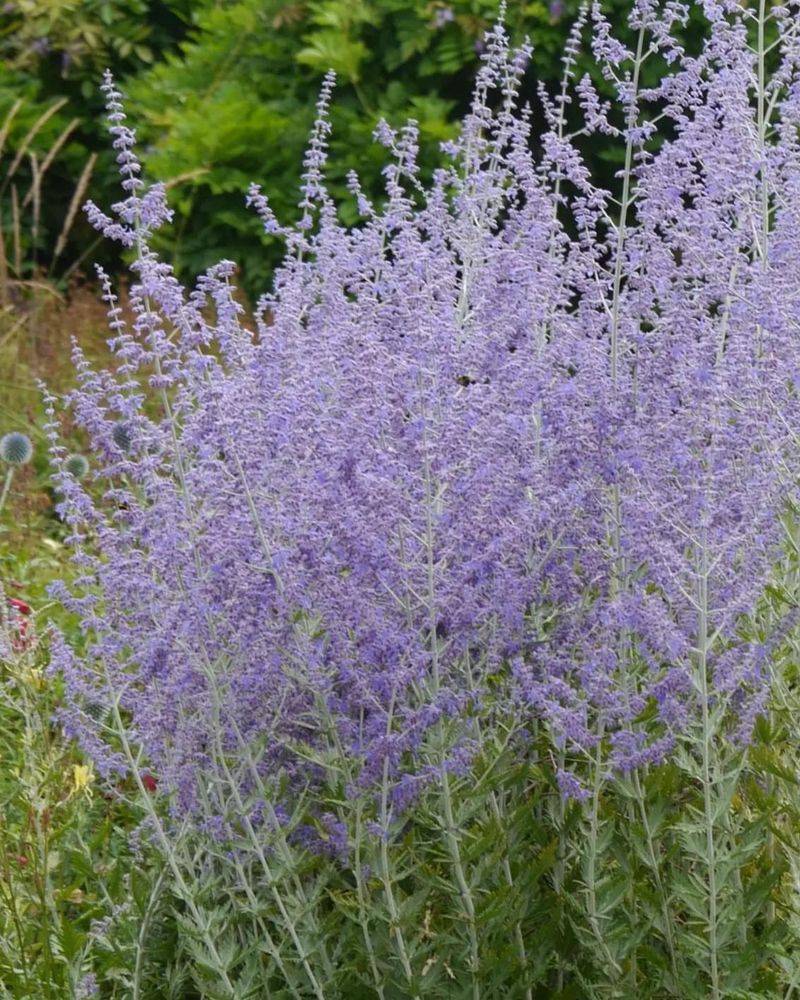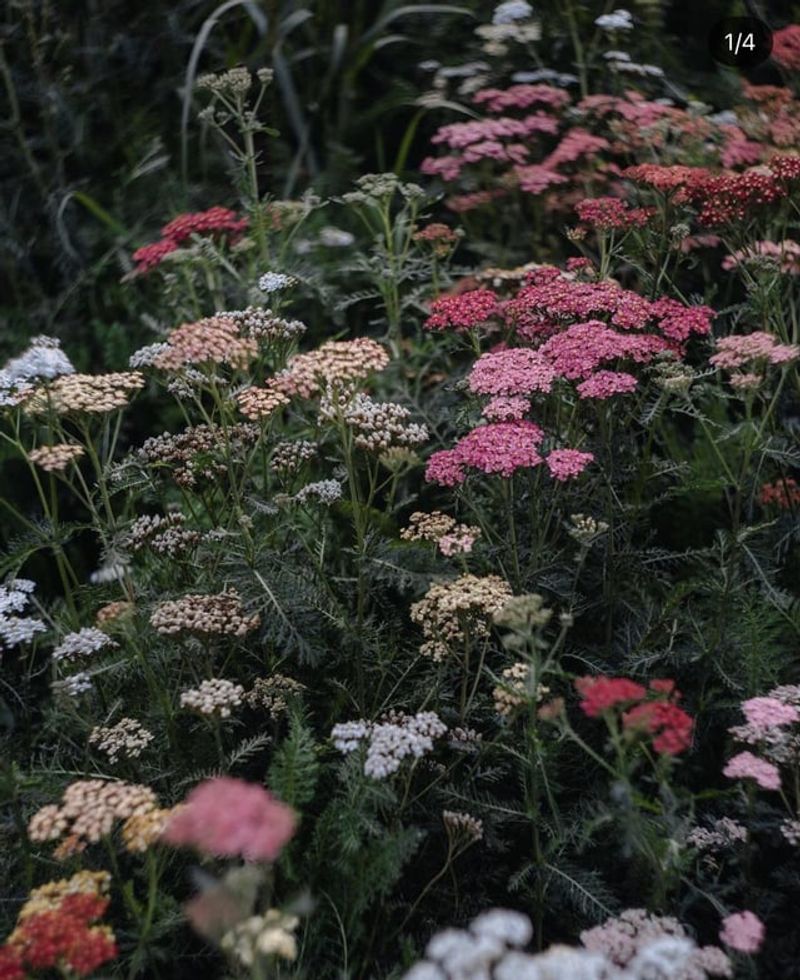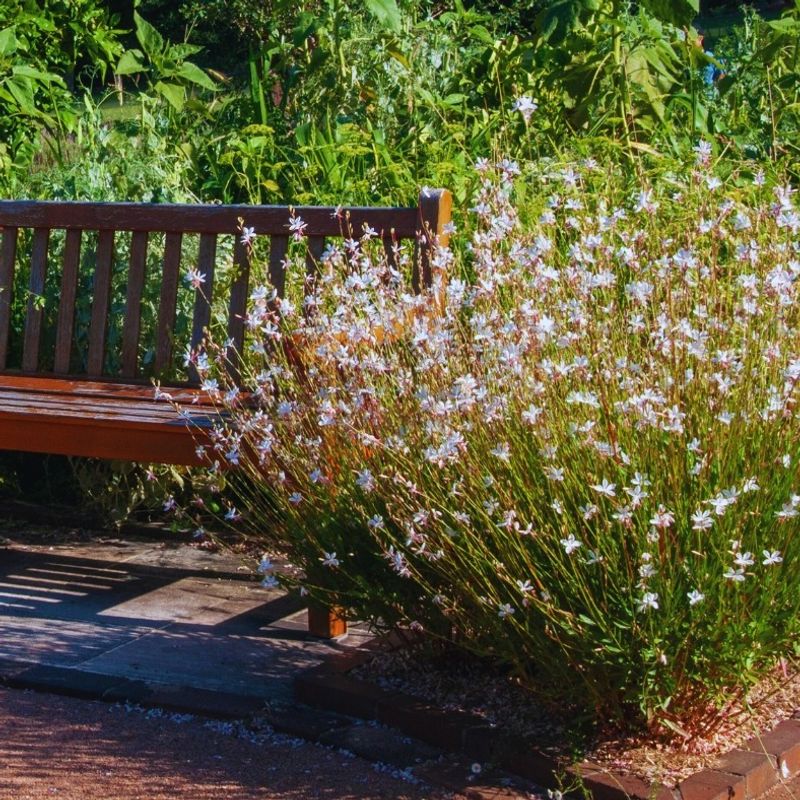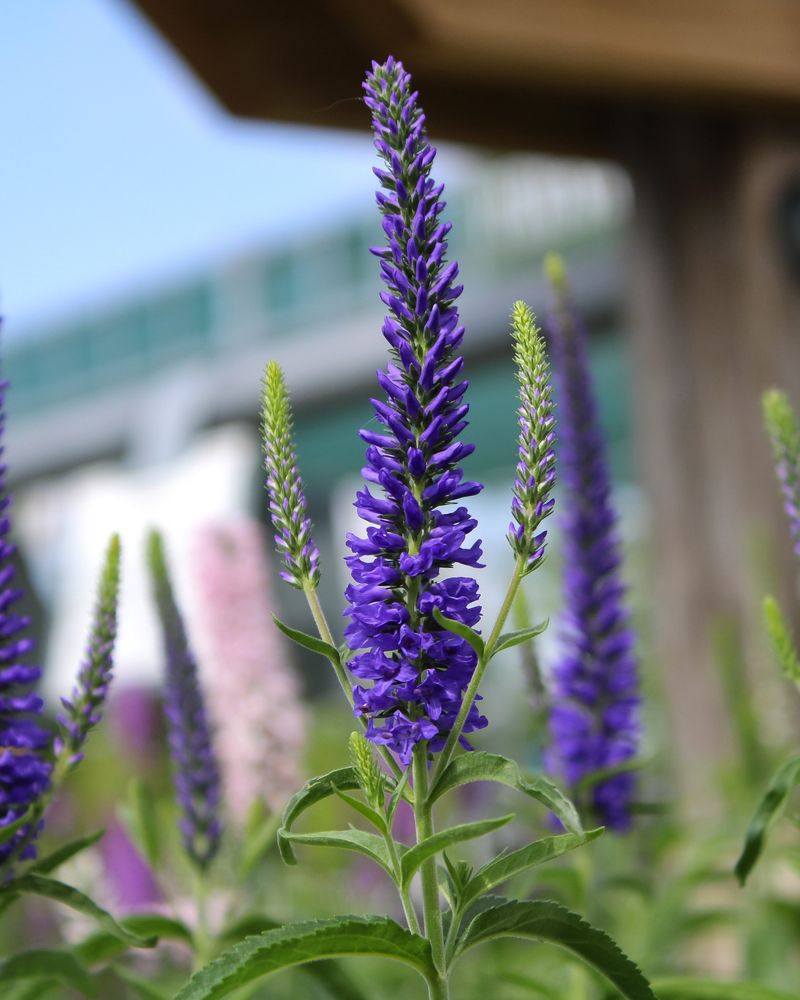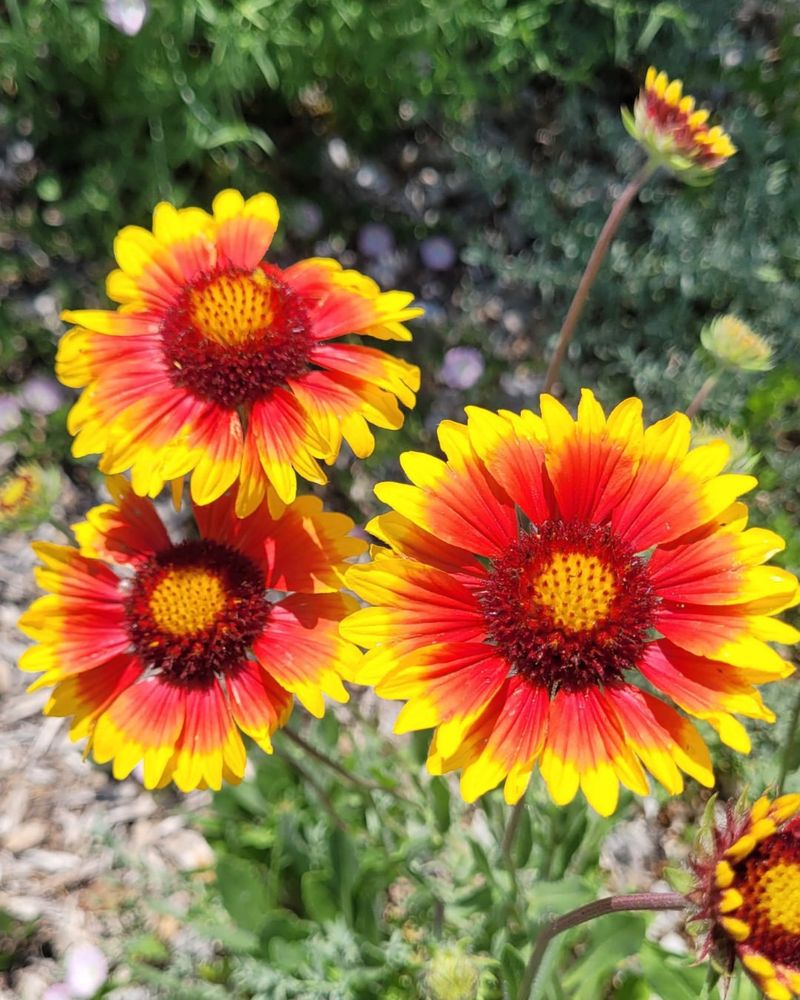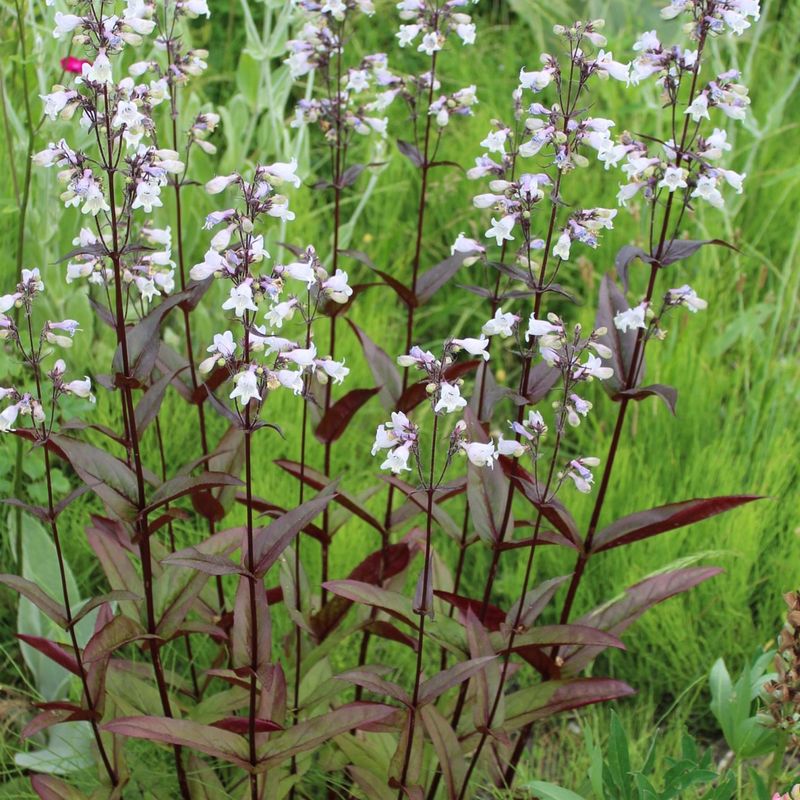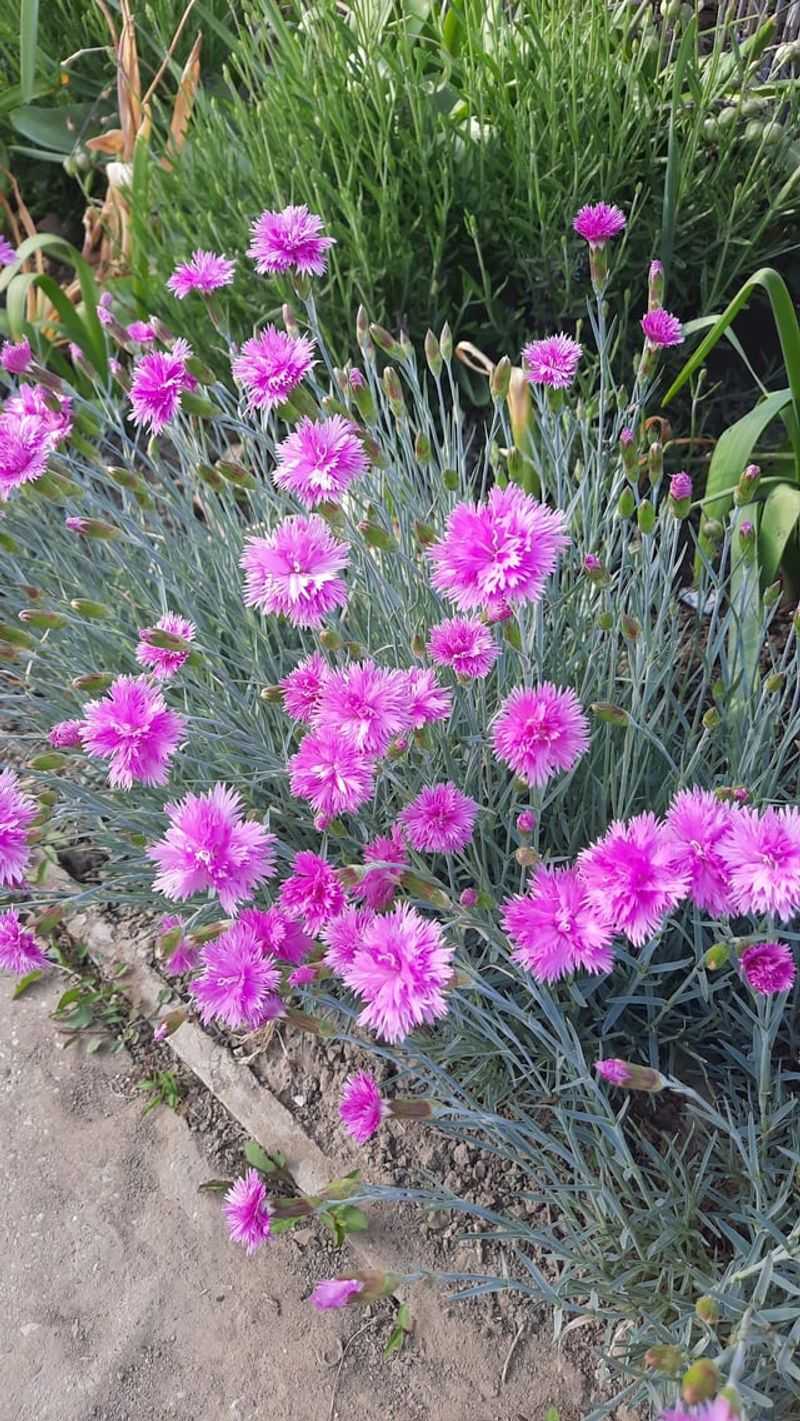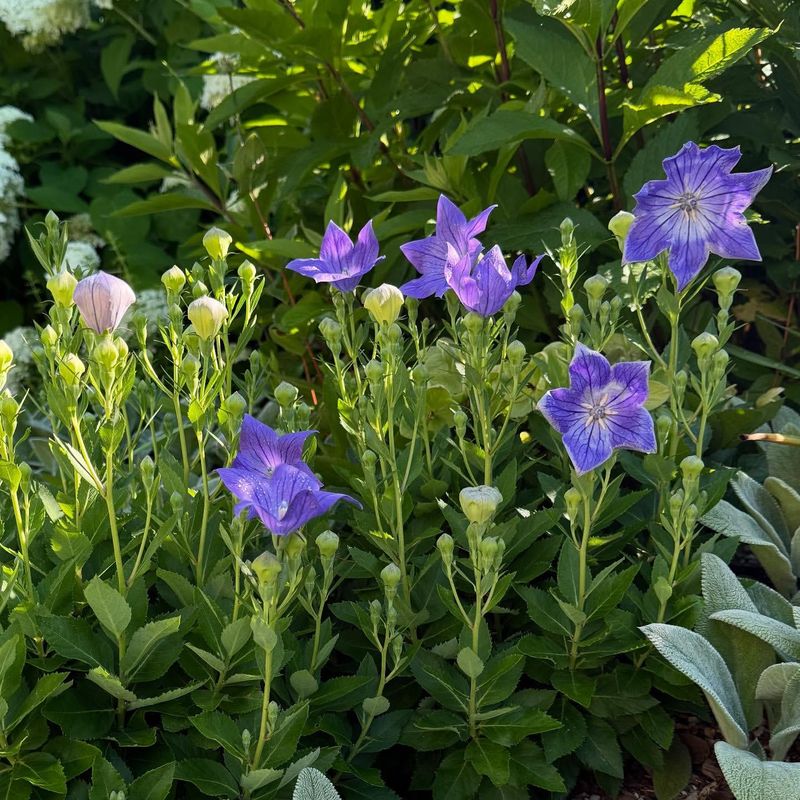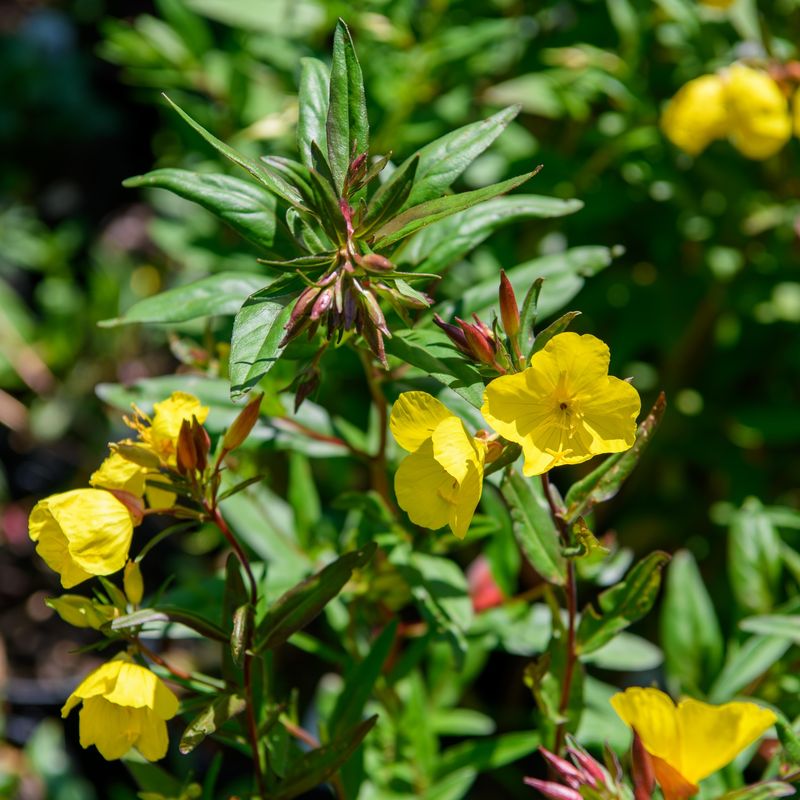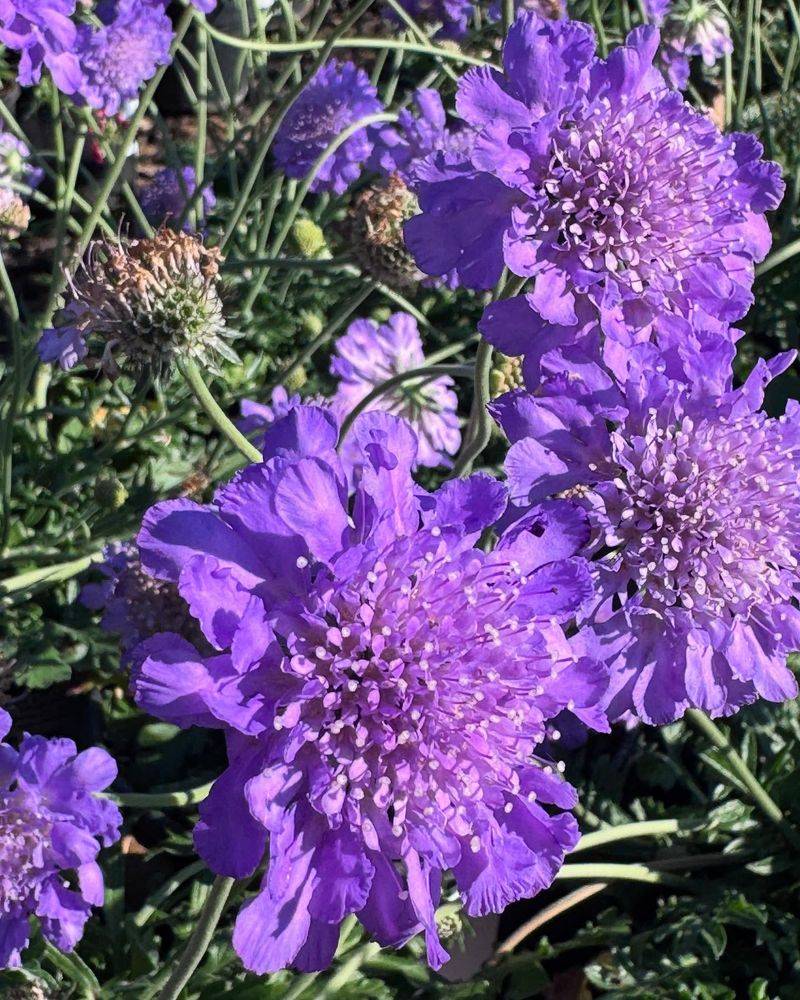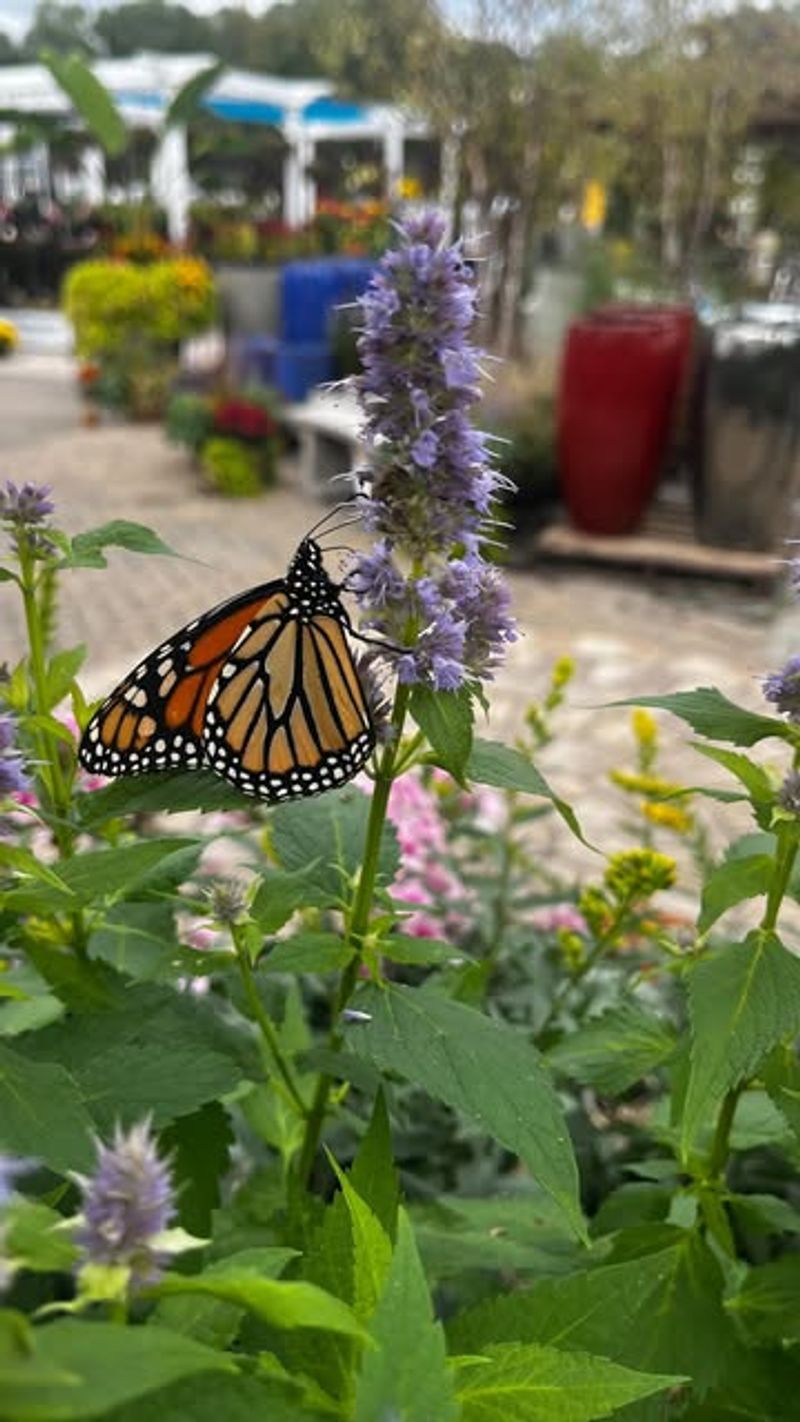Tired of blooms that vanish before you’ve even had time to admire them? Long-blooming perennials are the answer—bringing vivid color for months, not weeks. They show up strong year after year, with very little effort on your part.
These garden MVPs keep flowering for 12 weeks or more, turning ordinary yards into extended showcases of texture and hue. Whether you’re juggling a full calendar or just want fuss-free beauty, they’re perfect for low-maintenance success.
With the right mix of these 18 hard-working perennials, you’ll enjoy a garden that stays lively through the season. It’s reliable color without the constant tending—and your flower beds will thank you for it.
1. Coreopsis
Sunny yellow, orange, or bicolor flowers appear from early summer until frost with regular deadheading. Most varieties stay under 2 feet tall, making them perfect for borders and containers.
Growing in zones 4-9, these drought-tolerant plants attract butterflies while deterring deer and rabbits. The fine-textured foliage provides an attractive backdrop even when not in bloom.
I’ve found that cutting back leggy stems by a third in midsummer triggers a fresh flush of flowers. ‘Moonbeam’ and ‘Zagreb’ varieties have performed especially well in my garden, flowering reliably even during hot, dry spells.
2. Catmint
Lavender-blue flower spikes emerge above aromatic gray-green foliage from late spring through fall. A quick trim after the first bloom cycle encourages repeat flowering without any additional care.
Extremely drought tolerant once established, catmint thrives in zones 4-8 and requires minimal watering. Bees and butterflies flock to the flowers while deer and rabbits typically avoid the scented foliage.
For smaller gardens, compact varieties like ‘Walker’s Low’ stay neat without sprawling. In my experience, planting catmint along pathways releases a pleasant minty fragrance whenever someone brushes against it.
3. Black-Eyed Susan
Golden-yellow flowers with dark centers bloom from midsummer until frost, creating a meadow-like effect in any garden. These native plants grow 2-3 feet tall and spread gradually without becoming invasive.
Thriving in zones 4-9, they handle poor soil and drought conditions once established. The sturdy stems rarely need staking, even in windy locations or after heavy rain.
Leaving some seed heads in fall provides food for finches and other birds. My garden has self-seeded Black-Eyed Susans that fill gaps between other perennials, creating a naturalized look that requires zero effort on my part.
4. Salvia
Spiky purple, blue, or pink flower stalks appear from late spring through fall, creating vertical interest in garden beds. Perennial salvias grow in tidy clumps that don’t require staking or frequent division.
Heat and drought tolerance make these plants perfect for hot, sunny spots in zones 4-9. The aromatic foliage naturally repels most pests and diseases, reducing maintenance needs.
After the first heavy bloom, cut stems back by half to encourage another flush. ‘May Night’ and ‘Caradonna’ have been standouts in my garden, flowering for nearly four months with just one mid-season trim.
5. Geranium
Hardy geraniums (not to be confused with annual Pelargoniums) produce cup-shaped flowers in shades of pink, purple, or blue from late spring through fall. Most varieties form low-growing mounds under 2 feet tall.
These adaptable plants thrive in zones 4-8 in both full sun and partial shade. The deeply cut foliage often develops attractive fall color, extending seasonal interest even after blooming slows.
A quick shearing after the first flush rejuvenates both foliage and flowers. ‘Rozanne’ has been the longest bloomer in my experience, continuing to produce violet-blue flowers even during summer heat when others take a break.
6. Coneflower
Daisy-like flowers with distinctive raised centers appear from early summer until frost on stems reaching 2-4 feet tall. Modern varieties come in purple, white, yellow, orange, and even green.
Native to North America, coneflowers thrive in zones 3-9 with minimal care once established. Their deep root systems help them withstand drought while supporting pollinators and providing seed for birds.
Unlike some perennials, these plants maintain their good looks even during the hottest part of summer. I’ve found that skipping deadheading in late summer allows the seed heads to feed finches while still producing new blooms alongside them.
7. Lavender
Fragrant purple, blue, or white flower spikes rise above silvery foliage from late spring through late summer. The Mediterranean heritage gives these plants exceptional drought tolerance once established.
Growing in zones 5-9, lavender performs best in poor, well-drained soil with minimal fertilizer. The woody stems maintain their structure year-round, providing winter interest even after flowering ends.
English varieties like ‘Hidcote’ and ‘Munstead’ have been most reliable in my garden. I’ve learned to trim plants back by about one-third after flowering but never cut into old wood, which can prevent regrowth in following seasons.
8. Russian Sage
Airy clouds of small lavender-blue flowers appear on silver-gray stems from midsummer until frost. Growing 3-4 feet tall and wide, this plant creates a dramatic backdrop for smaller perennials.
Exceptionally drought and heat tolerant, Russian sage thrives in zones 4-9 with minimal care. The aromatic foliage naturally deters deer, rabbits, and most garden pests throughout the growing season.
Newer compact varieties like ‘Little Spire’ stay more upright without flopping. After growing several types, I’ve noticed they perform best when left completely alone—the less attention I give them, the better they seem to bloom.
9. Yarrow
Flat-topped flower clusters in yellow, white, pink, or red appear from early summer through fall above ferny, aromatic foliage. Most varieties grow 2-3 feet tall with a sturdy, upright habit.
Growing in zones 3-9, yarrow thrives in poor soil and actually blooms better with some neglect. The flowers attract beneficial insects while the foliage naturally repels many common garden pests.
Cutting spent blooms promptly encourages continuous flowering. In my garden beds, ‘Moonshine’ with its bright yellow flowers and silvery foliage has been virtually maintenance-free, blooming for over four months without supplemental water.
10. Gaura
Delicate white or pink butterfly-like flowers dance on wiry stems from early summer until frost. The airy appearance adds movement to garden borders while requiring minimal maintenance.
Heat and drought tolerant, gaura thrives in zones 5-9 with well-drained soil. The long bloom time makes it an excellent companion for plants that flower briefly or take seasonal breaks.
Despite its delicate appearance, this plant handles tough conditions with ease. I’ve found gaura particularly useful for filling awkward spaces where other perennials struggle, such as hot spots along driveways or in poor soil areas.
11. Veronica
Spiky blue, purple, pink, or white flower stalks rise above neat mounds of foliage from early summer through fall. Most varieties stay under 2 feet tall, making them versatile for front or middle positions in borders.
Adaptable to zones 3-8, veronica performs well in average garden conditions without special treatment. The flowers attract butterflies and bees while maintaining a tidy growth habit that rarely needs staking.
A quick trim after the first flush triggers repeat blooming. ‘Sunny Border Blue’ has been the longest performer in my garden, producing deep blue spikes for nearly four months when other plants start to fade in late summer.
12. Blanket Flower
Red and yellow daisy-like flowers with bold centers bloom continuously from early summer until frost. Growing just 1-2 feet tall, these cheerful plants fit easily into smaller gardens and containers.
Native to North America, blanket flowers thrive in zones 3-9 with excellent heat and drought tolerance. Sandy or poor soil actually improves flowering by preventing the lush foliage growth that can reduce bloom production.
Regular deadheading keeps the flowers coming. My plants have survived winter temperatures well below zero without protection, returning each spring to bloom for over 100 days straight—quite impressive for such a compact perennial.
13. Penstemon
Tubular flowers in shades of purple, pink, red, or white appear on upright stems from late spring through fall. The bell-shaped blooms attract hummingbirds and butterflies throughout the growing season.
Thriving in zones 3-9 depending on variety, penstemons prefer well-drained soil and moderate watering. Their semi-evergreen foliage provides structure even when not in bloom, especially in milder climates.
Cutting back spent flower stalks encourages continuous blooming. ‘Husker Red’ has been particularly reliable in my garden, combining burgundy foliage with pale pink flowers that continue producing even when other perennials have given up for the season.
14. Dianthus
Fragrant pink, red, or white flowers with distinctive fringed petals appear from late spring through fall above blue-gray foliage. Most varieties form low mounds under 12 inches tall, perfect for edging or rock gardens.
Growing in zones 3-9, dianthus thrives in full sun with well-drained soil. The spicy clove scent attracts butterflies while deterring many garden pests throughout the growing season.
A light shearing after the first heavy bloom encourages repeat flowering. ‘Firewitch’ has performed exceptionally well in my garden, continuing to produce magenta blooms even during hot, dry periods when many other perennials take a break.
15. Balloon Flower
Star-shaped blue, white, or pink flowers open from distinctive balloon-like buds from early summer through fall. Growing 1-2 feet tall, these plants maintain a neat, clumping habit without spreading aggressively.
Thriving in zones 3-8, balloon flowers perform well in average garden soil with moderate moisture. Unlike many long-bloomers, they tolerate partial shade while still producing abundant flowers over several months.
Removing spent blooms extends the flowering period considerably. The late emergence in spring can be a benefit—I’ve paired mine with spring bulbs, allowing the balloon flower foliage to hide the declining bulb leaves just as they become unsightly.
16. Evening Primrose
Bright yellow cup-shaped flowers open in succession from early summer through fall on plants reaching 1-3 feet tall. Some varieties feature additional red stems or burgundy foliage for extended interest.
Native to North America, evening primrose adapts to zones 4-9 with excellent drought tolerance once established. The flowers attract beneficial pollinators while the plant’s deep taproot helps it survive in poor conditions.
Unlike some aggressive spreaders, ‘Lemon Drop’ and ‘Fireworks’ varieties maintain a manageable clumping habit. I’ve found these plants remarkably carefree—they bloom for months on end without deadheading, dividing, or special fertilizing treatments.
17. Scabiosa
Pincushion-like flowers in blue, pink, or white appear on slender stems above neat foliage mounds from late spring through fall. Growing 12-18 inches tall, these plants work beautifully in containers and front borders.
Adaptable to zones 3-8, scabiosa prefers well-drained soil in full sun locations. The unique flower shape attracts butterflies and bees while maintaining visual interest even as the blooms age.
Regular deadheading keeps new flowers coming throughout the season. ‘Butterfly Blue’ has been a standout performer in my garden, flowering nearly continuously from June through October—remarkable longevity for such delicate-looking blooms.
18. Agastache
Spikes of tubular flowers in purple, blue, orange, or pink appear from early summer until frost above aromatic foliage. Most varieties reach 2-4 feet tall with a vertical growth habit that doesn’t require staking.
Thriving in zones 5-9, agastache performs best in well-drained soil with minimal fertilizer. The anise-scented leaves naturally deter deer and rabbits while the long-lasting flowers attract hummingbirds and butterflies.
Drought tolerance increases after the first year in the ground. ‘Blue Fortune’ has proven remarkably reliable in my garden, continuing to produce lavender-blue flower spikes even during extended dry periods when many other perennials have stopped blooming.

